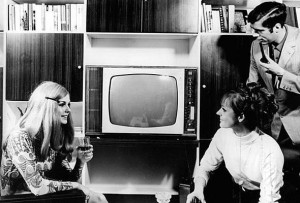Summer is in full swing, and that’s got us thinking about beaches and barbecues and made us realize how differently we approach our time off than we do our daily work lives. And maybe we shouldn’t. Whether you’ve already enjoyed a nice long break, are planning a two-week getaway or just a weekend staycation, there are plenty of ways we approach our time off that would be beneficial to bring back to the office. Here’s a look at five ways you can bring your vacation mindset back to the workplace and make it work for you.
1. Digital Detox
According to a recent research project by IAB Real View, 52% of people say they prefer to check their smartphones during downtime rather than be left alone with their thoughts. This figure might sound low for those of us accustomed to reaching for our phones every time we break away from our laptops, but think about the last time you went on vacation. You probably didn’t spend the entire time with your face buried in Facebook. Studies have shown that high social media usage, especially time spent on Facebook, is linked with lower life satisfaction and productivity loss. Need an extra hand weaning yourself off the “Likes”? Sites like 99 Days of Freedom offer a little extra encouragement and structure for those looking to keep their selfies to themselves.
2. Reconnect with Colleagues
Vacation dinners call to mind long, conversation-fueled feasts over good bottles of wine with family and friends. Why not bring that mindset back to the boardroom? No, we’re not saying get tipsy with your CFO, but why not catch up with one of your colleagues over coffee or take your mentor out to a good meal? Researchers recently discovered that our closest living relative, the chimpanzee, actually gets a boost of the “love hormone” oxytocin when they share a meal. Plus, getting out of the office environment, and, if you’re following step 1, leaving your phone in your pocket or purse, allows you to give the other person your undivided attention, helping to force or strengthen important workplace bonds.
3. Seek Out Advice
We’ve looked at the benefits of approaching your own city as an outsider in our Think Like a Tourist series, but going on vacation is a chance to see it in action. When we’re visiting another city, we tend to take recommendations and ask the advice of others; in fact, we will seek it out. Even if we’ve been to a place before, we want a local’s perspective. So, why not do this in your daily life as well? Ask your art director where she’s getting her latest inspiration, or check in with your business development rep to get his insight on a new client. Getting out of your comfort zone can help you see the world, and maybe even do your job, through a new, exciting lens.
4. Recharge Your Mind, Body and Soul
Whether it’s booking a massage or sitting by the beach to read a good book, when we’re on vacation, we always seem to take time for ourselves, doing mood-boosting and stress-relieving activities. We’ve previously talked about how mindful thinking and meditation can give you a cognitive workout and make you a better multi-tasker, but even just taking a 15-minute break to walk outside and get some sunshine can help you better focus on work.
5. The Endless Vacation Day
Doesn’t it seem like we often do more in one day on a vacation than in a week back home? If you’re in another city or country and don’t know when (or if) you’ll be returning, suddenly even the most notorious procrastinators and worst planners are able to prioritize what they really want to see and do to make the day count. Part of this is because negative feelings or perceptions of situations can wipe out our self-control and ability to think and plan clearly. By focusing on things that are important to us, we’re better able to tackle that task, thus boosting our mood to start the next. So, next time you’re feeling like you can’t get it all done, imagine your vacation self and pick the one, two or three most important tasks for you to do today and focus on those.
Just as there are endless ways to spend your vacation, there are endless ways to bring what you’ve learned back home with you. What are your favorite ways to keep your vacation mindset for the rest of the year?

